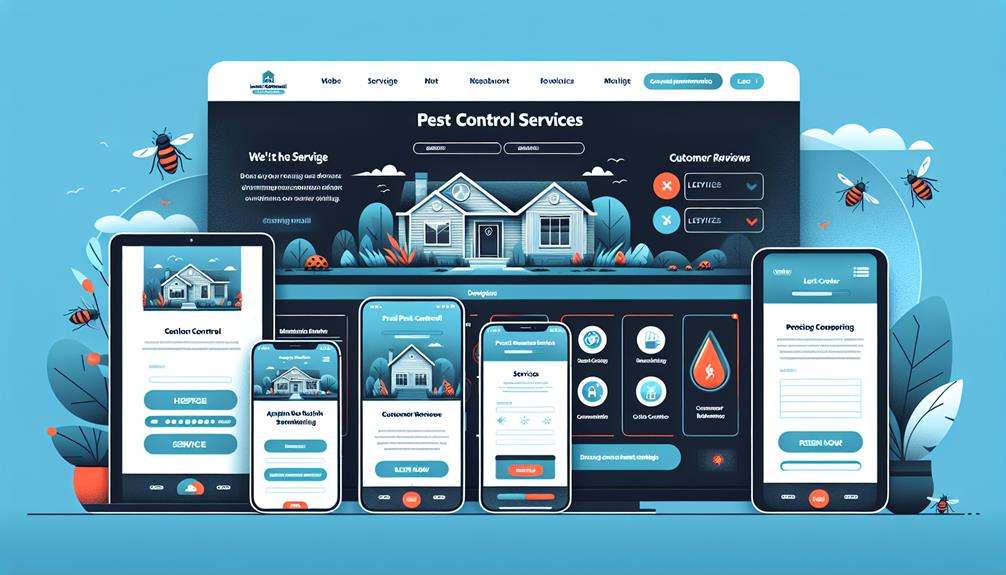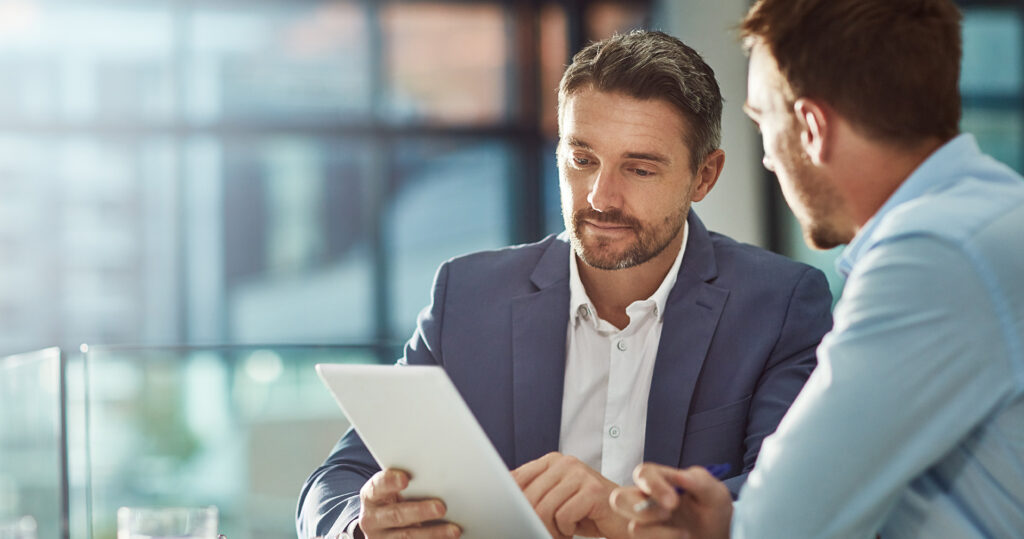So, you’ve decided to enter the exciting world of pest control websites. Congratulations! Now, let’s talk about how you can create a website that not only serves its purpose but also delights your customers.
With the ever-increasing competition in the pest control industry, it’s crucial to have a website that stands out from the swarm. In this discussion, we will explore the key elements that can make your website a true delight for your customers, leaving them buzzing with satisfaction.
Table of Contents
ToggleKey Takeaways
- Incorporate responsive design to ensure that pest control websites are accessible and user-friendly on all devices.
- Implement clear navigation menus that prioritize important sections and avoid clutter.
- Use compelling visuals to capture the attention of website visitors and convey the brand identity of the pest control company.
- Create engaging content that provides helpful information, uses storytelling techniques, and includes interactive elements to keep customers interested and informed.
Responsive Design

Make your pest control website accessible to all devices with responsive design.
In today’s digital age, where people rely heavily on their smartphones and tablets, it’s crucial to optimize your website for mobile devices. By incorporating mobile optimization into your website’s design, you ensure that users can easily navigate and access your content regardless of the device they’re using.
Responsive design goes beyond just fitting your website onto a smaller screen. It focuses on creating a user-friendly interface that adapts seamlessly to different devices and screen sizes. With responsive design, your pest control website will automatically adjust its layout, font sizes, and images to provide the best viewing experience for your visitors.
A mobile-optimized website not only enhances user experience but also improves your website’s search engine rankings. Search engines like Google prioritize mobile-friendly websites in their search results, making it easier for potential customers to find and engage with your business.
Don’t miss out on potential customers just because your website isn’t optimized for mobile devices. Invest in responsive design and provide a seamless user experience across all devices, ensuring that your pest control website remains accessible and user-friendly.
Clear Navigation
Ensure seamless navigation on your pest control website by implementing a clear and user-friendly menu system. A user-friendly interface and an intuitive layout are crucial elements for keeping your visitors engaged and helping them find the information they need quickly and easily.
When it comes to designing your menu system, simplicity is key. Avoid cluttering your navigation with too many options or using complex drop-down menus that can confuse visitors. Instead, opt for a clean and straightforward menu structure that organizes your content logically.
To create a user-friendly interface, consider using descriptive labels for your menu items. This will help users understand what each section contains, making it easier for them to navigate to their desired pages. Additionally, use clear and concise language that’s easy to understand.
In terms of layout, prioritize the most important sections of your website in the main navigation menu. This will ensure that users can access crucial information in just a few clicks. Consider using submenus for organizing additional pages or services, but be mindful not to overwhelm your visitors with too many layers of navigation.
Compelling Visuals

Capture your audience’s attention with stunning visuals that bring your pest control website to life. Visual storytelling is a powerful tool that allows you to convey your brand identity and engage your visitors in a meaningful way. When it comes to pest control, images can be more impactful than words alone. By incorporating compelling visuals into your website, you can effectively showcase your services, highlight your expertise, and build trust with potential customers.
When creating visuals for your pest control website, it’s essential to consider your brand identity. Choose images that align with your company’s values and mission. For example, if you want to portray a professional and trustworthy image, opt for high-quality photographs that depict clean and well-maintained environments. On the other hand, if you want to emphasize your eco-friendly approach, use images that showcase the use of environmentally safe products and practices.
Visual storytelling goes beyond just selecting the right images. It also involves using those visuals strategically to guide your visitors through your website. Incorporate images that support your content and help to break up text-heavy pages. Use infographics or diagrams to explain complex processes or illustrate the benefits of your services. By presenting information visually, you can make it easier for your audience to understand and remember.
Engaging Content
Engage your website visitors with captivating content that keeps them coming back for more.
When it comes to creating engaging content for your pest control website, there are a few key strategies you can implement to enhance the user experience and optimize for SEO. Here are four tips to help you get started:
- Provide helpful information: When users visit your website, they’re looking for answers to their pest control problems. Offer informative articles, blog posts, and FAQs that address common issues and provide practical solutions. This not only establishes your expertise but also keeps users engaged and encourages them to explore your website further.
- Use storytelling techniques: Humans are naturally drawn to stories. Incorporate storytelling into your content by sharing real-life experiences, case studies, or customer testimonials. This not only makes your content more relatable but also helps build trust and credibility with your audience.
- Include interactive elements: Engage your visitors by incorporating interactive elements such as quizzes, surveys, or polls. This not only adds an element of fun but also encourages user participation and provides valuable insights for your business.
- Optimize for SEO: To ensure your content reaches a wider audience, optimize it for search engines. Use relevant keywords, incorporate meta tags, and create compelling meta descriptions. This will help improve your website’s visibility and drive organic traffic.
Call-to-Action Optimization

To optimize your call-to-action and drive conversions on your pest control website, consider implementing these effective strategies.
- The conversion rate on your website is a crucial factor in determining its success. You want visitors to take action, whether it’s scheduling an appointment, requesting a quote, or signing up for your newsletter.
- To ensure a positive user experience and increase conversions, your call-to-action buttons should be clear, prominent, and compelling. Use action-oriented language that creates a sense of urgency, such as ‘Book Now’ or ‘Get a Free Quote Today.’ Make sure the buttons are easily clickable and stand out visually.
- Position them strategically on your website, ensuring they’re visible on every page.
- Additionally, optimize your call-to-action by offering incentives such as discounts or free consultations. This will entice users to take action and increase the likelihood of conversion.
- Keep track of your call-to-action performance by analyzing data and making adjustments as necessary.





